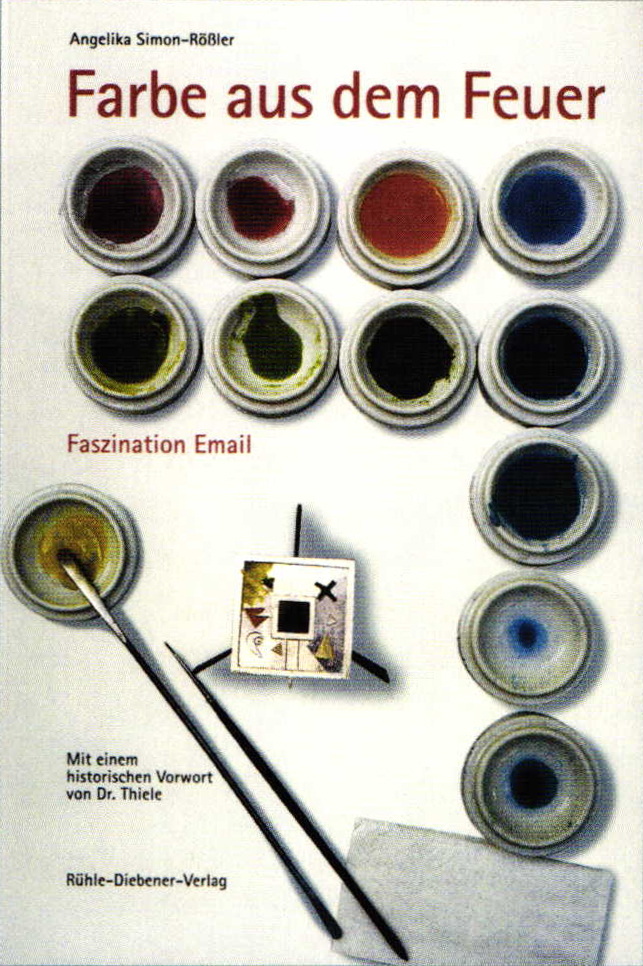Enamel Coloring Techniques
2 Minute Read
On the difficulties with handling enamel: Enamel is one of the most durable methods of confining colors to a background. Artists and craftsmen have been fascinated with this material since antiquity. The variety of colors and techniques offers an inexhaustible wealth of applications.
However, people drawing on enamel in their work will soon encounter many different difficulties. The reason: complex, in some cases inscrutable chemical and physical processes take place during firing. Enamel work includes two fundamentally different materials. Metal and glass respond extremely differently when exposed to heat. Accordingly, there are often unpredictable reactions between enamel and metal and also between the layers of enamel fired on top of each other.
Enamel and metal
In order to reduce problems to a minimum, it is important to observe that not every enamel suits every metal. Transparent red is a striking example of this. This color can form on a selenium or gold chlorite basis. If this enamel color is fired on a gold base, it shines deeply and has a saturated color tone. The metal components that diffuse in during the firing process have a positive influence on the color. However, if the same color is fired on a silver base, it appears ugly, brown and opaque. The diffused silver components bond with the enamel and create unfavorable compounds. These problems can be avoided if one has the right know-how.
Mistakes when applying enamel
Causes and possible remedies
The examples listed below are attempts to rectify faults. However, sometimes all effort is in vain and the enamel work cannot be saved, despite all the tests. In this case, we must resort to the last means and completely remove the enamel. As this is only possible using aggressive hydrofluoric acid, it should remain the absolute last resort.
Which metals can be used for enamel?
The melting point and the expansion coefficient of the materials (metal and enamel) play an essential role when applying enamel, as the metallic base and the enamel colors should form one common unit. The diagram provides a summary of the expansion coefficient of the individual materials and their suitability for enamel.
Expansion coefficients of the individual materials
This article is reprinted from the reference book "Farbe aus dem Feuer" (Color from the Fire) by Angelika Simon-Rößler; master goldsmith and precious metal designer, who has made a name for herself in this field. The book was published by Ruehle-Diebener-Publishing. In the book, the author explains the most common enamel techniques (groove, cell and wire enamel) and the most standard types of enamel (opal, opaque, transparent and painted enamel), describing in detail each individual stage of the work. This makes the book a practical manual and important reference work for any studio. ("Farbe aus dem Feuer" is currently only available in German)
by Angelika Simon-Robler
You assume all responsibility and risk for the use of the safety resources available on or through this web page. The International Gem Society LLC does not assume any liability for the materials, information and opinions provided on, or available through, this web page. No advice or information provided by this website shall create any warranty. Reliance on such advice, information or the content of this web page is solely at your own risk, including without limitation any safety guidelines, resources or precautions, or any other information related to safety that may be available on or through this web page. The International Gem Society LLC disclaims any liability for injury, death or damages resulting from the use thereof.
The All-In-One Jewelry Making Solution At Your Fingertips
When you join the Ganoksin community, you get the tools you need to take your work to the next level.
Trusted Jewelry Making Information & Techniques
Sign up to receive the latest articles, techniques, and inspirations with our free newsletter.
